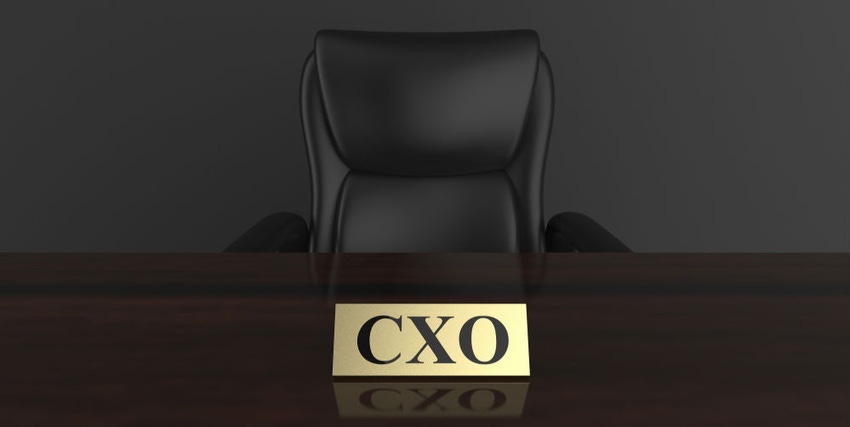The chief experience officer role is all the rage, and partners might want to take note.
May 30, 2019

By Kevin Casey
Just about everyone knows the saying, “The customer is always right.” It’s not literally true – customers behave badly, too – but it conveys a more general truth, which is that businesses tend not to stick around very long without customers.
It’s not surprising, then, that the traditional lineup of C suite roles – think CEO, CFO, CMO, CIO – has expanded to include some newer titles, such as the CXO, or chief experience officer. It has actually been around for a while; research firm Forrester was offering webinars about the CXO role a decade ago, for example.
What might have at first sounded like a passing fad has proven to be a lasting trend. Consulting firm Janco Associates, which focuses on the IT industry, recently declared the CXO one of the toughest roles for companies to fill, in spite of lucrative starting salaries.
CXO job descriptions vary, but they fundamentally boil down to one thing: a relentless focus on the customer (or user, in some contexts) experience on all fronts, including digital. (And let’s face it: The customer or user experience is almost if not entirely digital for many businesses today.) The fact that this is increasingly an executive-level post makes sense in terms of the competitive landscape. In 2017, a Gartner survey found two-thirds of marketers said their companies compete mostly on the basis of customer experience; 81% of those marketers expected their business would compete mostly or entirely on the basis of customer experience in two years — which is, like, now.
A managed service provider might be thinking: Yeah, this doesn’t apply to us.
If you’re focused on the SMB market, or if you’re a smaller company yourself – or both – you’re right – but only partially.
“I think MSPs focused on the SMB market may find it challenging to dedicate a full-time person as a CXO,” says Mark Nelson, senior director and leader of the managed services team at West Monroe Partners.
Don’t stop reading, though, even if that describes you. The rise of the CXO in larger enterprises speaks to the growth of customer experience as a critical competitive differentiator, and there are key lessons learned here even if the actual role isn’t likely to take hold in your company. In fact, the health of your business may depend on those lessons.
“Even if an MSP does not have a dedicated CXO, an MSP needs to have a client experience program that focuses on every aspect of the solution being delivered and how it affects your clients,” Nelson says.
He also notes that client experience is fundamental to any MSP relationship, and in midsize and larger firms, the CXO could be a natural evolution of existing client experience or “key account” programs that are likely already in place in those organizations.
Nelson’s not alone, either.

SolarWinds’ Dave Sobel
“Without question, the customer experience should be prioritized within the organization,” says Dave Sobel, senior director, MSP evangelism, SolarWinds MSP. “Does an MSP need a CXO to do that? No. Does leadership need to be on board with prioritizing the customer experience? Absolutely.”
That’s the bottom-line takeaway: You don’t need a CXO to prioritize customer experience, but you do need to prioritize customer experience. Too many MSPs aren’t doing that, according to Anurag Agrawal, principal analyst at Techaisle.
Consider this nugget from a Techaisle survey of channel partners: “Only 55% of MSPs are focused on meaningful customer partnerships — meaning that 45% are not, which is ridiculous,” Agrawal says.
Agrawal concurs that in small and even some midsize MSPs, a distinct CXO role isn’t a likely trend. In those shops, the CEO is ultimately …
… also the CXO; sometimes, the top sales executive (if the CEO isn’t also wearing that hat) doubles (or should double) as the CXO. Nonetheless, the CXO role, in Agrawal’s view, speaks to a broader shift in the channel.
 “For decades, partners have aspired to achieving ‘trusted adviser’ relationships with their customers,” Agrawal says. “But if the market is moving from value addition to value creation for the customer, isn’t it essential to move beyond ‘trusted adviser’ status to becoming, in a meaningful sense, a partner of the customer, invested in the client’s business success? Yes. Enter customer experience officers.”
“For decades, partners have aspired to achieving ‘trusted adviser’ relationships with their customers,” Agrawal says. “But if the market is moving from value addition to value creation for the customer, isn’t it essential to move beyond ‘trusted adviser’ status to becoming, in a meaningful sense, a partner of the customer, invested in the client’s business success? Yes. Enter customer experience officers.”
With that in mind, let’s consider three key points partners can take away from the CXO trend, even if the role isn’t likely to materialize in your company in the near future.
The “S” in MSP has two meanings. Whether it’s an executive post or falls under the auspices of an existing strategic accounts program (or similar), customer experience shouldn’t exist in a silo. It needs to be everyone’s job.
“Generally speaking, too often IT service providers focus too much on the IT services and not enough on service. By definition, an MSP is a services company and a service company,” says Sobel from SolarWinds MSP. “The customer experience should always be a priority that runs wide and deep throughout the organization. Every level within an MSP’s organization needs to think about the customer experience and how they are working to improve it.”
MSP value and client expectations need to be in sync. MSP relationships – like in many service provider contexts – tend to fray when there’s a gap in expectations. Nelson from West Monroe Partners notes that this is where the CXO role could be tailored specifically to the MSP industry: working relentlessly to ensure the value the MSP is providing is well-aligned with what the customer needs. The advice applies even if you’re not going to create the position.
“The value would be driving both the MSP and the client to the same expectations and value,” Nelson says. “The client cares about the value being delivered and a CXO in an MSP would align internal operations with client value.”
The channel is changing. “Duh,” says everyone. What business or industry isn’t changing? Agrawal, for one, notes that the channel, in particular, is necessarily evolving from a transactional business to one where success is defined by long-term customer relationships — which, if you want to boil it down to dollars and cents, translates to: “recurring revenue.” Poor customer experience is antithetical to recurring revenue. Vendor partner programs should take heed, too, Agrawal says.
“It is my assertion that, by 2021, 100% of MSPs should be focused on meaningful customer partnerships,” Agrawal says. “Which means that for MSPs they need to have a focused business strategy on customer experience and shared risk deployment. What it means for the MSP’s vendor partner is that they should incentivize MSPs on lifetime value over transaction value.”
The customer may not always be right, but you want to keep most of them around for the long haul. Their experience and satisfaction will determine whether that happens or not.
“Every MSP – regardless of size – should be focused on the satisfaction, happiness and overall experience of its associates and its customers,” Sobel says. “The fact is when an organization does customer experience right, it’s baked into the DNA. And if it isn’t, that’s step one. Be customer-centric every day and in every way.”
Read more about:
MSPsYou May Also Like
